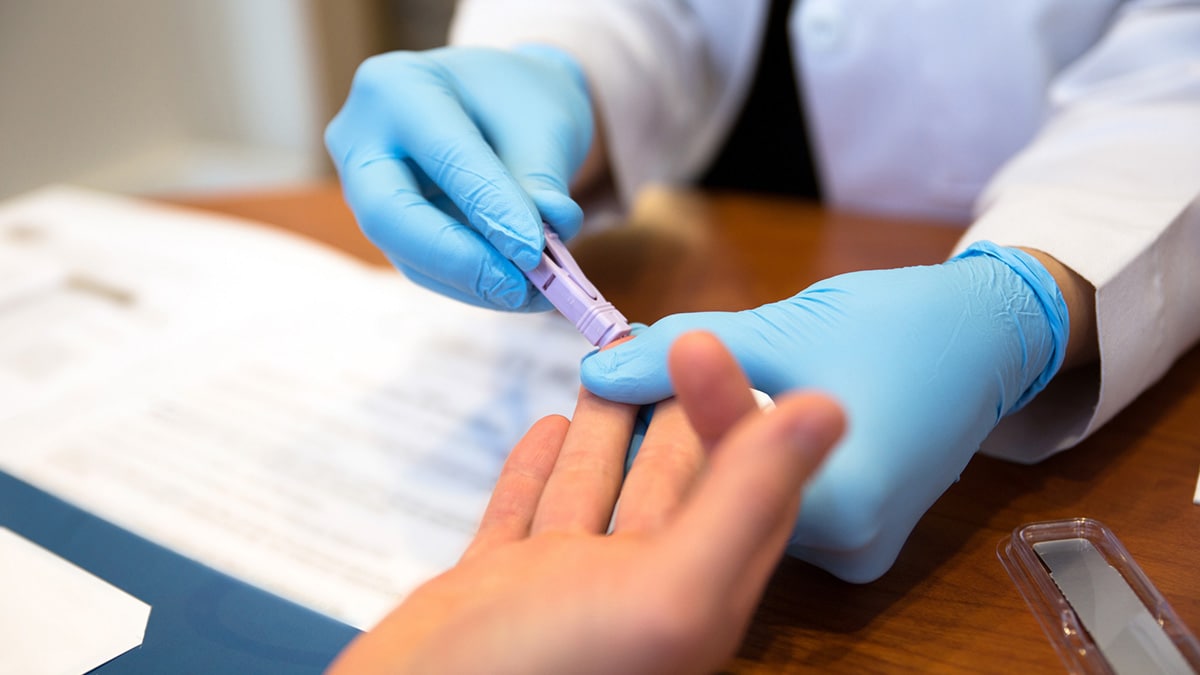What to know
HIV testing and screening are important first steps in diagnosing infection. Diagnosing HIV infection early is cost-effective and saves the public money on direct medical costs. Expanding HIV testing saves lives and prevents others from getting infected.

The benefits of HIV screening and testing
In 2015, approximately 39,000 persons received a new HIV (human immunodeficiency virus) infection diagnosis. HIV testing is the vital first step for HIV care and effective prevention. These persons had been living undiagnosed with HIV but now know their status and have the opportunity to receive life-saving treatment.
HIV diagnosis also greatly reduces the risk of transmitting the virus to others. Persons without HIV learn about effective tools for reducing their risk of getting infected.
Cost-effectiveness of HIV screening and testing
Initial studies reported voluntary HIV screening to be cost-effective in health care settings where undiagnosed HIV infection is less than ≥0.1%12. It was also reported to be more cost-effective than many established screening programs for chronic disease (e.g., hypertension, colon cancer, and breast cancer).23 Treatment costs are lowered as well because treatment can begin before severe immunologic compromise occurs.
A more recent study reported HIV testing in clinical settings is cost-saving. This study focused on a model with consistent, standardized methods of evaluating the costs and effects of established and emerging HIV prevention strategies.4
The unit cost of testing was adjusted by the positivity rate of persons tested (0.6%). This was based on reports of HIV testing from CDC-funded sites to find a cost per new diagnosis. It found that the cost per case of HIV prevented by testing in a clinical setting was less than the lifetime treatment cost per HIV case.
Effectiveness of expanded testing in the United States
CDC-funded testing programs in the U.S. are substantial. They led to approximately one-third of all new HIV diagnoses in 2013.
From 2007 to 2010, CDC-funded Expanded Testing Initiative sites provided more than 2.8 million HIV tests. These tests resulted in approximately 18,000 new HIV diagnoses and saved $1.2 billion in direct medical costs.4 For every $1.00 spent on HIV testing, CDC saved the general public $2.00 on direct medical costs.
As more people receive an HIV infection diagnosis, the percentage of people who are unaware of their infection decreases. In 2006, 19% of persons with HIV were unaware of their infection. In 2014, this decreased to 15%.5 Some of the biggest improvements were among young gay and bisexual males between the ages of 13-24.6 This group was previously at the highest risk of HIV infection.
- Walensky RP, Weinstein MC, Kimmel AD, et al. Routine human immunodeficiency virus testing: an economic evaluation of current guidelines. Am J Med 2005;118:292–300.
- Paltiel AD, Weinstein MC, Kimmel AD, et al. Expanded screening for HIV in the United States—an analysis of cost-effectiveness. N Engl J Med 2005;352:586–95.
- Sanders GD, Bayoumi AM, Sundaram V, et al. Cost-effectiveness of screening for HIV in the era of highly active antiretroviral therapy. N Engl J Med 2005;352:570–85.
- Lin F, Farnham PG, Shrestha RK, Mermin J, Sansom SL. Cost effectiveness of HIV prevention interventions in the U.S. Am J Prev Med 2016; 50:699–708.
- Satcher Johnson A, Song R, Hall HI. State-level estimates of HIV incidence, prevalence, and undiagnosed infections [Abstract 899]. Presented at the Conference on Retroviruses and Opportunistic Infections, Seattle, Washington, February 13–16, 2017.
- Singh S, Song R, Satcher Johnson A, McCray E, Hall HI. HIV incidence, prevalence and undiagnosed infections in men who have sex with men [Abstract 30]. Presented at the Conference on Retroviruses and Opportunistic Infections, Seattle, Washington, February 13–16, 2017.
- Krueger A, Dietz P, Van Handel M, Belcher L, Johnson AS. Estimates of CDC-funded and national HIV diagnoses: a comparison by demographic and HIV-related factors. AIDS Behav 2016;20:2961–5.
